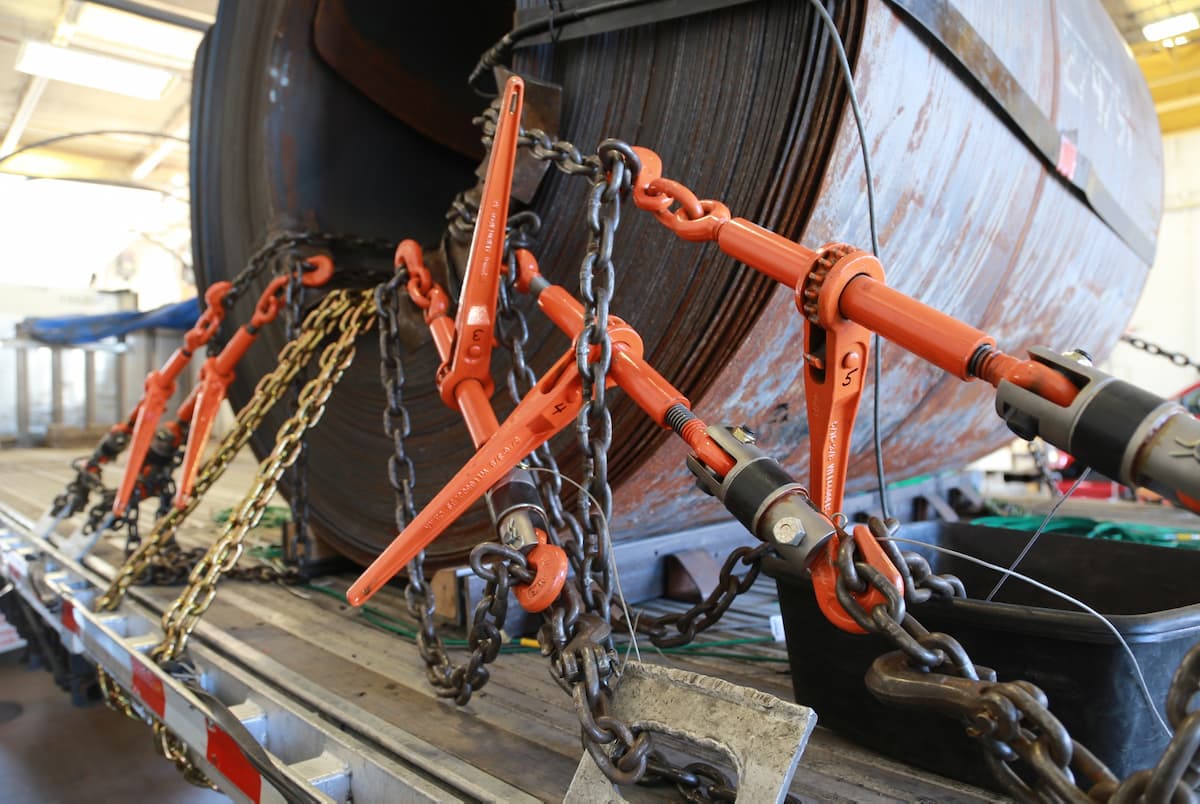Load Leveling Solutions: The Benefits of Flatbed Cargo Securement Equipment Accessories
In the world of transportation and logistics, the safe and
Share

When it comes to securing heavy loads, chain binders play a vital role in ensuring their safe transportation. However, binding a chain binder to a heavy load requires careful attention and adherence to safety precautions.
In this blog, we will explore essential precautions to take while binding a chain binder to secure a heavy load, emphasizing the importance of safety throughout the process.
Inspect the Chain Binder: Before use, thoroughly inspect the chain binder for any signs of damage, wear, or defects. Check for bent hooks, cracked links, or any other visible issues. Ensure that the ratchet mechanism and other components are in proper working condition. Any defective or damaged chain binders should be immediately replaced to maintain safety.
Properly Position the Chain Binder: When positioning the chain binder, ensure that it is aligned correctly with the load and the anchor points on the vehicle or trailer. Position the chain binder’s hooks securely on the designated anchor points, ensuring they are properly engaged and unable to disengage during transport.
Maintain Proper Alignment and Tension: To bind the load effectively, maintain proper alignment and tension throughout the process. Ensure that the chain binder is centered and straight along the load. Avoid twists or kinks in the chain as they can compromise the binder’s performance. Apply tension gradually, using the ratchet mechanism or lever, and maintain consistent tension throughout the binding process.
Protect Against Slippage: To prevent slippage while using the chain binder, take necessary precautions. Crank the binder with solid footing, or while kneeling down with the binder directly in front of you. This gives you a solid base to work from and eliminates slipping associated with fatigue or having your body off center.
Utilize Additional Safety Measures: Consider using additional safety measures to enhance load security. This may include utilizing 50% of the chain binders on one side of the load and the other 50% on the opposite side. This will evenly distribute the load’s weight instead of having all of the binders on one side. Employing friction mats, edge protectors or triplocks can also protect the load from shifting.
Regularly Inspect and Retighten: During transit, regularly inspect the chain binder and load to ensure they remain secure. Check for any signs of loosening or shifting of the load or binder. If any issues are identified, stop and check. Retighten the chain binder if necessary and address any potential problems immediately to prevent accidents or damage.
Follow Manufacturer’s Instructions: Always follow the manufacturer’s instructions for the specific chain binder model you are using. The manufacturer’s guidelines provide valuable information on the correct usage, maintenance, and safety precautions for the chain binder. Adhering to these instructions ensures that the chain binder functions optimally and minimizes the risk of accidents or failures.
Binding a chain binder to secure a heavy load requires strict adherence to safety precautions. By selecting the appropriate chain binder, inspecting it thoroughly, maintaining proper alignment and tension, utilizing additional safety measures, and regularly inspecting and retightening during transit, you can ensure the safe and secure transportation of heavy loads. Always prioritize safety and follow the manufacturer’s instructions to mitigate risks and protect both the load and those involved in the transportation process
In the world of transportation and logistics, the safe and
Welcome to REVOLOK™, your trusted partner in cargo securement solutions.
Cargo securement is critical to the transportation industry, ensuring that
When it comes to securing cargo on flatbed trailers, choosing
Cargo transportation is a crucial aspect of the economy, with
As industries and businesses around the world continue to evolve
"*" indicates required fields